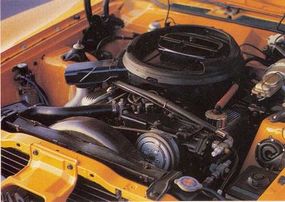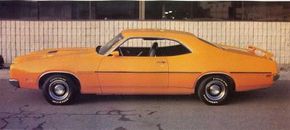Mercury marched lockstep with Ford through much of the age of muscle cars. Sure, it got many of the company's hot engines, but its Cougar never really ran with the wild ponys, and its midsize models were little more than fancy Fairlanes. That changed with the introduction of the marquee's best-ever muscle car, the 1970 Mercury Cyclone Spoiler.
Muscle Car Image Gallery
Advertisement
Here, finally was a body unique from that of the fastback Fords, a Coke-bottle shape with an individualized flavor. The Spoiler was the pure-performance version of the Cyclone GT, and actually came better equipped for battle than its Ford Torino Cobra cousin. Standard in the Mercury was the 370-bhp ram-air 429-cid V-8, an extra-cost upgrade in the Cobra. A Hurst-stirred four-speed with 3.50:1 Traction-Lok gears completed the drivetrain, while a "competition" handling package and G70xl4 tires laced it down.

As in the Ford, a Select-Shift automatic was optional, and so was the Drag Pack, which emboldened the 429 with solid lifters, stronger internals, and 375 bhp. The Drag Pack included 3.91:1 or 4.30:1 axles, the latter a Detroit Locker. As with the Torino Cobra, the Boss 429 engine was advertised as an early Cyclone Spoiler option, but few, if any, were installed.
Spoiler didn't use a shaker hood, going instead with an integrated functional scoop. A chin spoiler and rear air foil were standard, and while exterior adornment was left to simple tape stripes, six "Grabber" colors (blue, orange, yellow, green, coral, and platinum) were available. Mercury went Ford one better on the inside, providing Cyclones with a standard instrument cluster that included a proper round tachometer, and oil pressure, coolant temperature and amp gauges, all angled toward the driver. Torino made do with idiot lights and a weird horizontal-reading tachometer.

Befitting a Mercury, the Cyclone Spoiler was a big car. It shared Torino's wheelbase, but at a rangy 209.9 inches, its body was longer than the Ford's by 3.7 inches. And it weighed about 100 pounds more, similarly equipped. But finally, here was something more than a Fairlane facsimile. Here was a real muscle car Mercury.
Return to Classic Muscle Cars Library.
Advertisement
